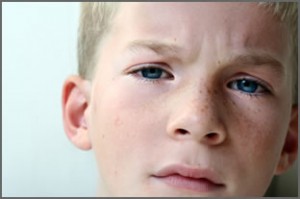Research shows that about one in 10 children and adolescents suffer from an anxiety disorder. Further, about five to eight percent suffer from depression. Both these relatively common psychological disturbances have serious long term consequences for children and adolescents if left untreated.
While many parents seek help for their children, research has shown that not all of these children will receive competently administered treatment that is based on the latest research findings and clinical advances in the field. Unfortunately for parents, there is no way to know whether their therapist’s practice meets worldwide standards.
To address this problem, researchers Elizabeth Sburlati, Carolyn Schniering, Heidi Lyneham and Ronald Rapee from the University’s Centre for Emotional Health have now turned their attention to developing a standardised model of therapist competencies for treating children and adolescents with anxiety and depressive disorders.The researcher’s findings have recently been published online in the international journal Clinical Child and Family Psychology Review.
The team, headed by Elizabeth Sburlati, first consulted leading treatment authors and experts from around the world to identify those therapist competencies that are needed to effectively treat child and adolescent anxiety disorders and depression, using current evidence based practices. They then developed a treatment model which incorporated expert recommendations.
Sburlati notes that while there are a number of treatments which are known to be effective for these type of disorders, many therapists in routine clinical practice are either not using them or are not implementing them correctly.
“In essence, there has been a gap between science and practice. This means that a large number of those children and adolescents seeking treatment from professionals are not receiving effective treatments and therefore, are not getting better,” she said.
This model of therapist competencies has been well received by both national and international experts in the field and has the potential to become the standard of practice upon which training programs can be developed.
“Now that we know what therapists need to be able to do to treat these kids effectively, we can improve training programs that teach these abilities and ensure that all therapists meet a certain standard of professional competence,” Sburlati said.
“This will raise professional standards in the field and subsequently safeguard many children and adolescents seeking treatment, ensuring that they receive effective treatment, and therefore, the best chance at recovery”.
Source: Macquarie University

